The world of gourmet cuisine has long been captivated by the exquisite taste and luxury of black caviar. Harvested from the prehistoric sturgeon fish found abundantly in the Caspian Sea, it has become synonymous with opulence and prestige.
Nowadays, you can buy caviar that is produced in organic farms, in accordance with international rules and regulations. However, this has not always been the case, the growing demand for this delicacy has created a number of environmental problems. In this article, we delve into the environmental impact of black caviar production in the Caspian Sea region, exploring the intricacies of harvesting caviar and its implications for the delicate ecosystem.
Black Caviar Harvesting: A Precious Commodity
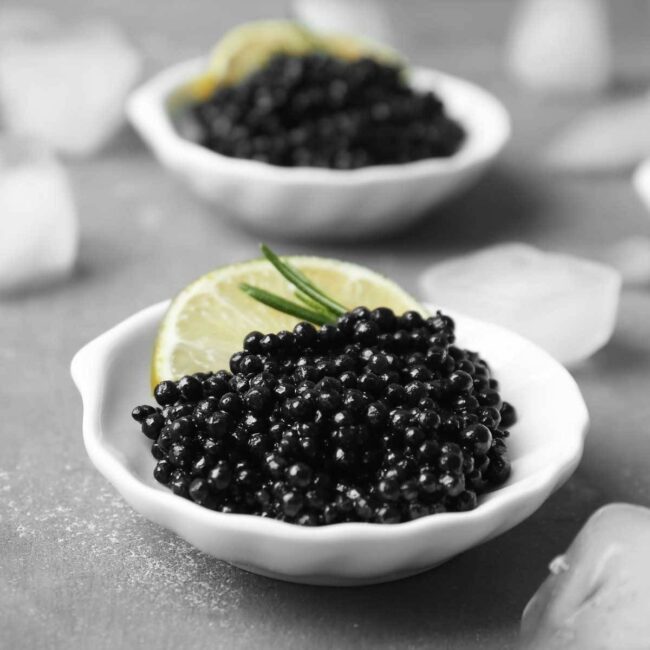
Black caviar, often referred to as the “black gold,” represents the roe or eggs of sturgeon fish. Harvested from various sturgeon species, including the Beluga, Sevruga, and Osetra, caviar is a delicacy highly sought after by connoisseurs worldwide. The Caspian Sea region, encompassing countries such as Russia, Kazakhstan, Iran, and Azerbaijan, is renowned for its rich sturgeon population and long-standing tradition of caviar production.
The Complex Process of Harvesting Caviar
The harvesting of caviar is a meticulous process that requires expertise and precision. Sturgeon fish, known for their longevity and slow maturation, take several years to reach reproductive age. To obtain caviar, sturgeons must be carefully captured and gently massaged to extract the eggs without harming the fish. Traditionally, fishermen would catch sturgeons, slice them open, and scoop out the roe. However, this method resulted in a high mortality rate and endangered sturgeon populations.
Sustainable Practices and Caviar Production
Recognizing the critical need for conservation, sustainable practices have been introduced to minimize the impact of caviar production on sturgeon populations and the environment. Today, many caviar producers employ a technique known as “captive breeding” to ensure the sustainability of sturgeon species. This involves collecting fertilized eggs from wild sturgeons, raising them in controlled environments, and then carefully extracting the caviar when the fish are mature enough to reproduce. By releasing a portion of the bred sturgeons back into the wild, this method helps maintain a healthy population and mitigate the negative consequences of overfishing.
Environmental Concerns and Conservation Efforts
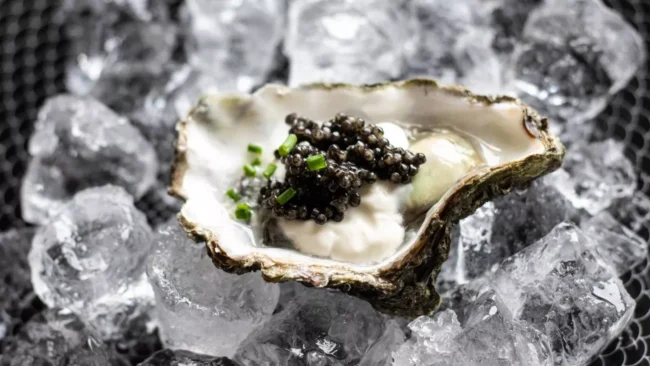
Despite the adoption of sustainable practices, the environmental impact of black caviar production remains a concern. Overfishing and illegal harvesting caviar from sturgeon practices have significantly contributed to the decline in fish populations in the Caspian Sea region. The destruction of spawning grounds, habitat degradation, and pollution from industrial activities further exacerbate the challenges faced by these ancient fish.
To address these issues, international organizations, governments, and conservation groups are working together to enforce regulations and implement stricter controls on caviar production. Measures such as establishing protected areas, monitoring fishing quotas, and promoting public awareness campaigns are crucial steps toward ensuring the long-term survival of sturgeon species and the preservation of the Caspian Sea ecosystem.
Unveiling the Unique World of Caviar: Fascinating Insights and Little-Known Facts
Fact 1: Giants of the Deep
Among the majestic creatures inhabiting the depths of our oceans, the Beluga sturgeon stands as a true behemoth. This colossal sturgeon species, known for its buttery caviar, can grow to astonishing lengths of up to 7 meters (23 feet) and weigh over 1,000 kilograms (2,200 pounds). With a slow and patient journey to sexual maturity spanning up to 20 years, these magnificent giants command both respect and admiration.
Fact 2: An Ancient Epicurean Tradition
The culinary allure of caviar transcends time, tracing its origins back to antiquity. In the annals of gastronomic history, caviar has been treasured for centuries, captivating the palates of emperors and monarchs alike. Throughout the Middle Ages, caviar not only tantalized the taste buds but also served as a vital source of sustenance, bestowing nobility upon those who indulged in its delicate flavor.
Fact 3: Nature’s Nutrient Powerhouse
Beyond its reputation as a culinary delight, caviar boasts an array of nutritional benefits. Laden with omega-3 fatty acids, vitamins, and essential minerals, this delectable delicacy has been celebrated for its ability to support brain function, promote heart health, and bolster the immune system. Caviar embodies the perfect fusion of gastronomic pleasure and nourishing sustenance.
Fact 4: Sublime Alternatives for Sustainability
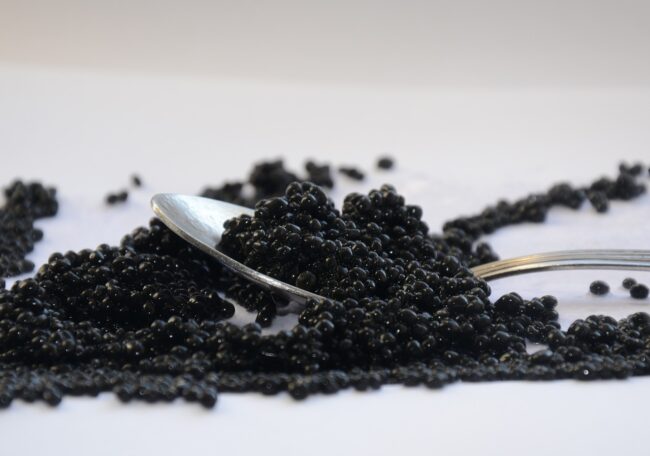
In the face of increasing demand and the pressing need for sustainable practices, alternative caviar options have emerged as a resounding solution. Embracing the textures and flavors reminiscent of traditional caviar, substitutes such as salmon roe or trout roe offer a more environmentally conscious choice, ensuring that the legacy of caviar can thrive without jeopardizing precious sturgeon populations.
Fact 5: The Symphony of Caviar Grading
The journey from the depths of the Caspian Sea to your palate entails a meticulous grading process, distinguishing caviar based on an orchestra of characteristics. Size, color, texture, and flavor intricately blend to determine the final composition of each roe. At the pinnacle of caviar grading stands the renowned “Malossol” category, representing caviar with minimal salt content, thus preserving a pristine taste. The most extraordinary caviar experiences are often derived from the mature roe of aged sturgeon, whose flavors have evolved and matured over time.
Fact 6: Legends of Longevity
Sturgeon fish enchant us not only with their captivating caviar but also with their remarkable lifespan. Some sturgeon species have been blessed with the ability to traverse the depths of time for over a century, making them among the longest-living fish on our planet. This longevity adds an extraordinary layer of complexity to the challenge of sustainably producing caviar, requiring extensive patience and care.
Fact 7: The Plight of Precious Populations
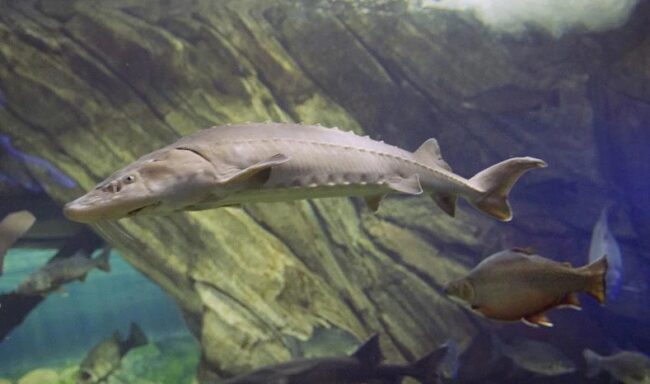
Alas, the demand for black caviar, coupled with the harrowing consequences of overfishing and habitat degradation, has taken a heavy toll on sturgeon populations worldwide. Certain sturgeon species now teeter on the brink of extinction, necessitating urgent conservation efforts and the implementation of stricter regulations. Only through collective dedication can we secure a brighter future for these ancient fish.
Fact 8: Shadows of Illicit Trade
The irresistible allure of black caviar has cast a dark shadow over its production. The soaring value and demand have created an illicit trade, plagued by caviar smuggling orchestrated by organized criminal networks. This clandestine underworld poses a formidable challenge to the protection of sturgeon populations and the pursuit of sustainable caviar production. Vigilant monitoring and stringent enforcement are paramount in combating this insidious trade.
Fact 9: Diversifying Origins
Traditionally heralded as the primary source of black caviar, the Caspian Sea has dominated the global market, contributing up to 90% of the supply. Yet, as concerns grow regarding sturgeon populations and environmental impact, other regions have emerged as promising contenders. From China to the United States, and Europe to unexpected corners of the globe, alternative caviar producers are embracing the challenge, offering hope for a diversified and sustainable future.
With each fascinating fact, the enigmatic world of caviar reveals its intricate tapestry of history, science, and conservation. As we traverse this culinary voyage, let us cherish the magnificence of sturgeon and embrace the responsibility to preserve the wonders of caviar for generations yet to come.
Conclusion
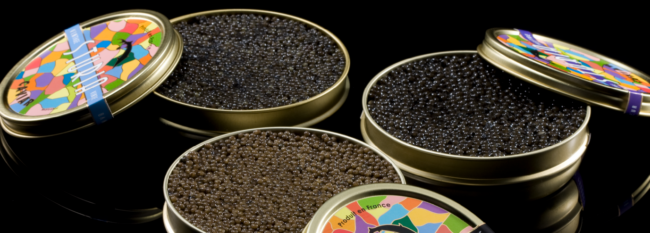
The production of black caviar in the Caspian Sea region has both economic and environmental implications. While black caviar represents a luxurious culinary experience, it is essential to acknowledge the impact it has on the delicate sturgeon populations and their habitat. By promoting sustainable practices, regulating fishing activities, and fostering conservation efforts, we can strive to strike a balance between the demand for black caviar and the preservation of the Caspian Sea ecosystem. It is through responsible choices and collective action that we can safeguard the future of this prized delicacy for generations to come.
